“Food seemed to trigger the strongest memories for his father. As he strolled around, his nose was constantly twitching in appreciation.” ~ from Noodle Pie by Ruth Starke
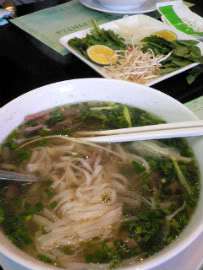
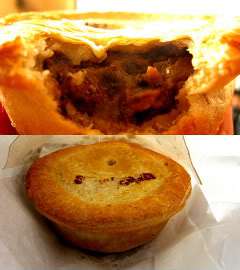
In Noodle Pie, East meets West: Vietnamese pho and Aussie meat pie (photos by LiY!n and Filor).
Who could resist a book called Noodle Pie?
Certainly not me. I’m so glad that in January 2010, Kane Miller published an American edition of this funny, engaging, and yes, totally delicious middle grade novel by award-winning Australian author Ruth Starke.

It satisfied my cravings for a little armchair travel, colorful characters, a bounty of ethnic food and family togetherness. Moreover, it taught me a lot about Vietnamese culture as seen through the eyes of almost-twelve-year-old Andy Nguyen, who visits Hanoi with his father for the first time.
DELICIOUS PREMISE
Andy is excited about his first plane ride, passport, and the chance to meet his dad’s side of the family. Growing up, he heard stories about how his father fled the country after the fall of Saigon and settled in Australia. It is a poignant visit for his dad, who’s anxious to be reunited with his family, but he’s beholden to them and painfully aware of their high expectations.
Understandably, Andy arrives with his own prejudices about his preconceived heritage. He’s initially critical of his pushy, impatient, somewhat greedy relatives, shocked by their poverty and unsanitary living conditions, and disappointed that the family restaurant he had heard so much about is actually nothing more than a small, shabby storefront with folding tables and plastic kiddie stools.
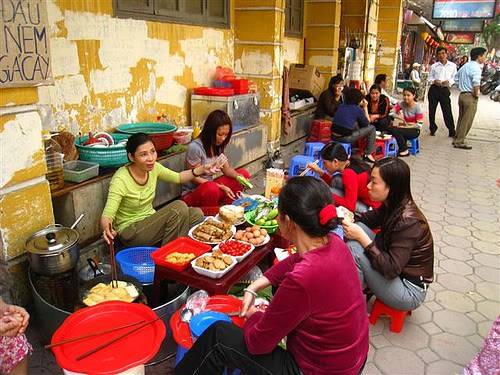
Street café, Hanoi (photo by yayoita).
His father’s strange behavior only adds to Andy’s confusion and disillusionment. Tuoc Nguyen is a “Viet Kieu,” someone born in Vietnam who now lives overseas, and he’s playing the part to the hilt. Though he struggles to make ends meet as a gardener back in Adelaide, in Hanoi he pretends to be wealthy and successful, bearing gifts for everyone, throwing money around like it grows on trees.
It’s interesting to see how Andy deals with his culture shock, how he interacts with each of his relatives, how finally learning what they’ve been through changes his perceptions and deepens his understanding of who he really is. In the course of the story, the many questions that arise in Andy’s mind keep the reader intrigued about the characters’ secrets and motivations. Why is Auntie Mo so mean? Why does his cousin Indy feel entitled to Andy’s belongings? Why does his cousin Minh skip school every day to sell postcards on the streets?
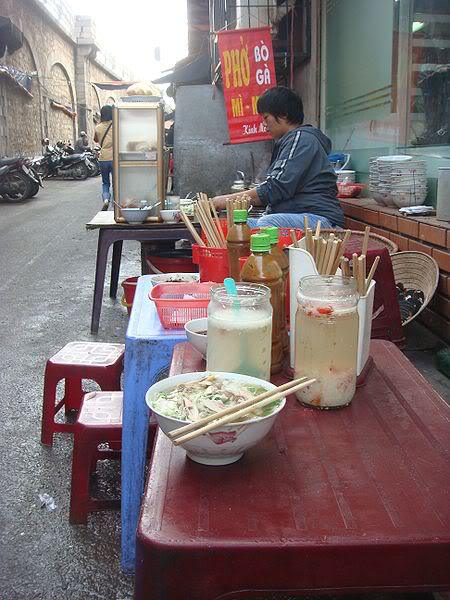
Pho Ga street vendor in Hanoi (photo source).
And what of the Phoung Nguyen, which serves great food, is very popular with the locals, but barely breaks even? Is there a way to update the retaurant and increase revenue? Hope abounds when Andy and enterprising, street-smart Minh devise a plan to lure tourists to the newly named “Noodle Pie.” Sounds like a great plan, but will the family be happy or feel insulted?
Truly an inspiring coming-of-age story: from hamburgers and meat pies with ketchup to steamy bowls of beef pho and mountains of fried noodles garnished with fresh greens and herbs. A great way to show young readers that no matter where you live, the same intangibles are what matter most: familial bonds, mutual respect, cooperation, determination, and gratitude. The resilience of the Vietnamese people is uplifting and offers much hope for the future.

Hoan Kiem Lake, Hanoi, a popular tourist spot, is mentioned in Noodle Pie (photo source: KL & BKK in Late July).
GREAT TAKE-AWAYS
♥ In Noodle Pie, food is its own character. Vivid descriptions of street cafés, markets, and open air cooking allow the reader to imagine the sights, sounds, tastes, and smells of the busy, noisy streets of Hanoi. Food is the best way to make any foreign culture highly accessible.

A recipe for Bo luc lac is included in the book (photo by NickNugyen).
Plates of food whizzed past his eyes — steamed crepes stuffed with minced pork, cold rolls, spring rolls, steamed dumplings, six different pork dishes, crispy noodles with meat, seafood and vegetables, salads topped with handfuls of fresh herbs, chicken glazed with honey, and some strange dishes that were probably left best unidentified. People bolted down their food as if they had something terribly urgent to do afterwards and were out the door — well, if there had been a door — in about twenty minutes.
Like a warm, welcoming hug, food entices the reader and makes him want to linger. Andy’s father describes pho as “Vietnam in a bowl. Poetry in a bowl!” One taste, and Andy forgets all about cornflakes.
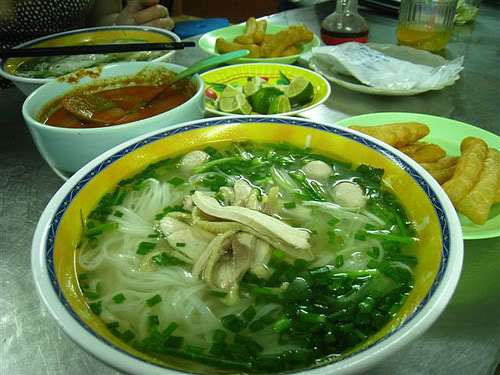
photo of Hanoi pho by yayoita.
The aromatic vapor from the bowl curled up and around him, and suddenly he was starving. He picked up the china spoon and chopsticks. The spicy broth was delicious, with chewy rice noodles and strips of succulent beef topped with chopped red chili, spring onions, coriander and mint, and lime chunks. It was salty and sweet and sour and bitter all at the same time, and ought to have been about the last thing you’d want first thing in the morning.
♥ Personal encounters with Andy’s relatives shed light on the larger issues facing the people of Vietnam. The tourist vs. insider points of view are well contrasted and illuminating. Via character interaction, many surprising cultural nuances are effectively revealed.
♥ Use of humor offsets the serious problems and makes for a lively narrative.
♥ Great insight on how history plays into contemporary life.
♥ Realistic portrayal of street children appropriately tempered for the target age group.
♥ Starke incorporates Koto (Know One, Teach One), a real, not-for-profit restaurant and vocational training program for street children and disadvantaged youth in the novel. An Author’s Note provides more details.

Koto Restaurant, Hanoi, Vietnam (photo by icarussg).
♥ Fab themes: families (nuclear and extended), father-son relationships, Vietnamese refugees, cultural identity and mores, traditions, prejudice, generations, social interactions, work ethic, tolerance and understanding.
♥ Several easy Vietnamese recipes are also included: Fried Bean Sprouts with Pork and Prawns, Cold Spring Rolls and Dipping Sauce, Vietnamese Chicken Salad, and Fried Beef with Watercress Salad. Yum!
WHAT TO DO NEXT
♥ Read the book, of course!
♥ Check out the Noodle Pie mini-site which contains a sample chapter, backstory and reviews, then visit Ruth Starke’s official website for more about her other books.
♥ Great Teacher’s Notes by Fran Knight here.
♥  Read all about Koto, and how you can help with their efforts.
Read all about Koto, and how you can help with their efforts.
♥ Hmmmmm. Feeling a little hungry? Just wait till you finish the book! You’ll probably do just what I did. I really had to. Read all about it next time!
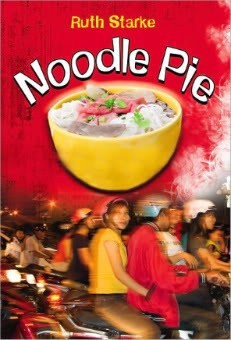
NOODLE PIE by Ruth Starke
published by Kane Miller (January 2010)
(first published by Omnibus Books, Scholastic Australia, 2008)
Fiction for ages 10+, 200 pp.
*Book of the Year, Speech Pathology Australia (2009)
“Vietnamese people are hard workers. They have to be, to survive. We have had so many wars. After American war — we called it American War, you know, not Vietnam war — this country was a desperate place. Jobs were hard to get, factories closed, essential services near collapse, gas and food rationed. We cut down trees for cooking fires. People never forget such bad times.” ~ Andy’s father
Copyright © 2010 Jama Rattigan of jama rattigan’s alphabet soup. All rights reserved.
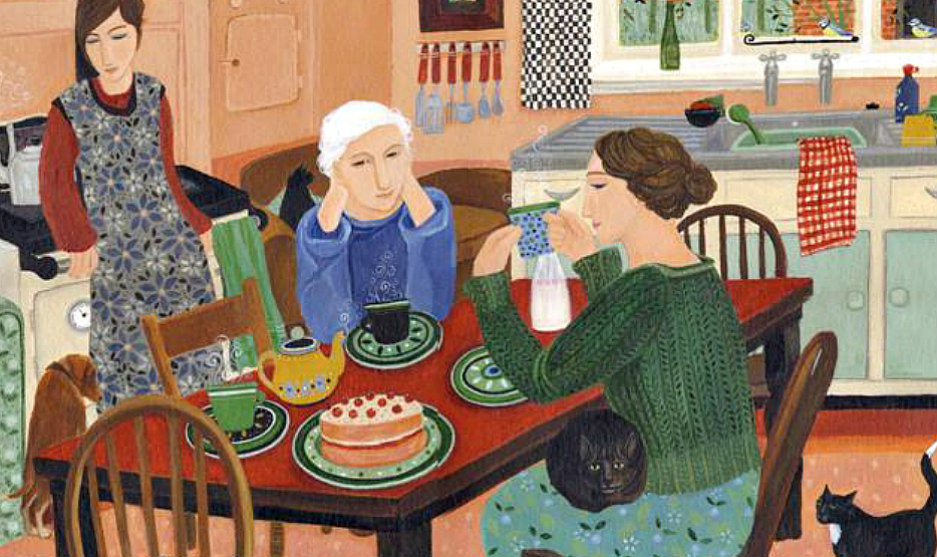
Dear Jama, I came late to your page but I have to thank you so much for this wonderful appreciation of my book Noodle Pie. The photographs are gorgeous, too!
Cheers
Ruth Starke
LikeLike
What a nice surprise. Thanks for your comment, Ruth! Thanks to Noodle Pie, I discovered a great Vietnamese restaurant in our area :). Thanks so much for writing this fabulous novel.
LikeLike